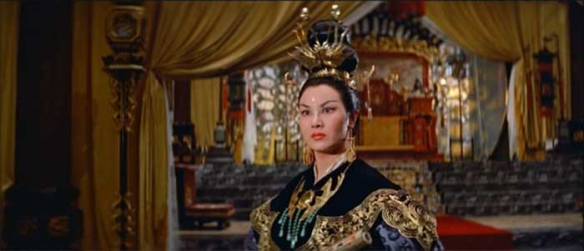Necromancy, ten years of NEO, and the carrot of continuations on our 27th podcast Jeremy Graves is joined by the fragrant Gemma Cox of NEO magazine, the pungent Andrew Partridge from Anime Ltd, and the newly doctored Jonathan Clements to discuss Scotland Loves Anime, the Boom Boom Satellite Distraction Device, and rogue robot tanks. You can download the podcast here.
0:00 intros and hellos
04:30 Dealing with a film festival in the shadow of Ghibli.
09:30 Bad hair days and uncanny valleys on Appleseed: Alpha.
11:30 The miseries of live television.
14:00 Appleseed: Alpha, the jury’s view.
16:30 The true nature of the Golden Partridge Award, soon to be renamed the SLA Glass… Thing.
20:00 Déjà vu and original dialogue in English.
22:00 Bayonetta and evocations of the beer-and-curry era.
25:00 Trigger warnings in The Wings of Honneamise. Berserk 3 and the “carrot of continuations.”
32:00 A young lady’s primer to fan service and fighting the patriarchy. Questions on the nature of the Noitamina target audience, and plugs for Psycho-Pass and Rolling Girls. Why do less women get promoted to anime director?
41:00 Gender demographics at NEO and Scotland Loves Anime. The flexibility of the female audience, and the desirability of girls in bikinis saving the world from aliens.
45:00 Just how involved is a “supervising” director?
46:30 The audience turn-out for Ghost in the Shell. The suggestion that fandom is a non-renewable resource. The longevity of Cowboy Bebop, outliving the television technology that originally screened it.
52:00 Celebrating ten years of NEO magazine with the 130th issue. The haptic luxury of print magazines, versus beaming digital data into your brain. The international reach and originality of the long-running Manga Snapshot feature. Deciding what goes on the cover, and the perennial problems of timing content to available releases and images.
68:00 Why commissioning your own artwork isn’t always the answer.
73:00 Paper quality, fonts and leading – a bunch of things that nobody ever thinks about.
76:00 Let’s go on a journey, a journey into NEO time… where did the name come from?
79:00 One more round on the whirligig of the “Manga” Entertainment name controversy.
81:00 The scandalous secret behind NEO’s recipe column. The tax-deductible nature of a “research” trip to Hooters.
85:30 The difficulties of knowing more than one’s readers when the readers have got all weekend to torrent, stream and binge the latest shows.
87:30 The desirability of “balanced” reviewing. What can we learn from Australian Vogue…? Would you buy a DVD compared to “colonic irrigation with cheap caustic soda” or with a review that promised “another shouty advert for stuff you don’t want”?
94:00 How do you define a star rating? We are 87.5% certain we know the answer to this question. The spoilerific nature of Sight & Sound and “the conversation.”
102:00 The need for necromancy in reminding fans of forgotten simulcasts. “Not all people live in the same Now.”
105:00 The perils of online search bubbles. Sting’s informational message for the future and the nature of the “closed circle of consumption.”
110:00 Dragon Ball Z: Battle of Gods.
117:00 Giovanni’s Island – the festival winner.
127:00 Jeremy returns from his dead battery to plug MCM Expo and events pertaining thereto.
And we’re out. The Podcast is available to download now HERE, or find it and an archive of previous shows at our iTunes page. For a detailed contents listing of previous podcasts, check out our Podcasts page.





